Painted Lady Plant Care: A Complete How-To Guide
If your green thumb is itching for a dash of pink, you’re in the right place. Dive into the colorful world of Painted Lady plant care, where the art of nurturing meets nature’s vibrant canvas!
From watering to providing the perfect light, and plant styling to problem-solving, I’m sharing everything you need to know to keep your Painted Lady happy, healthy, and looking beautiful in your home!
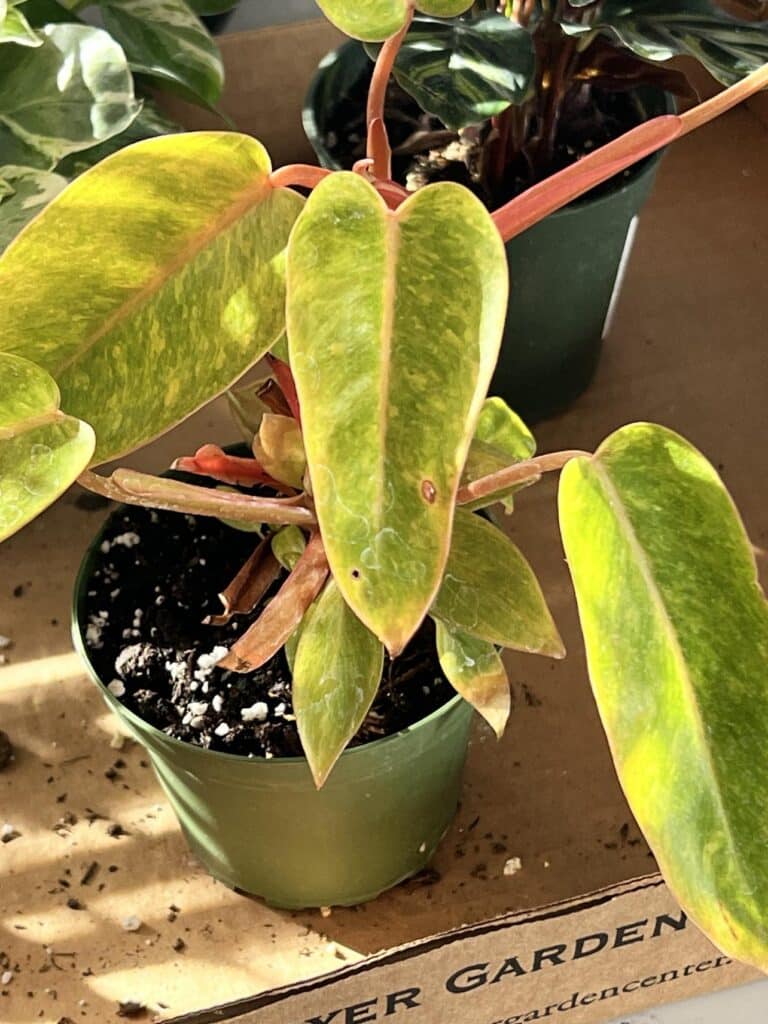
The presence of plants in my home is truly special. It’s like inviting a piece of nature into my personal space, creating an environment that makes me feel connected to nature.
Taking care of them has become a comforting routine, almost like tending to a little green family. It’s not just about decor; it’s about nurturing a living, breathing part of nature within the walls of my own home.
So I am excited to share my latest plant discovery…the philodendron Painted Lady plant!
I am always on the lookout for new indoor plants, especially during the winter months after all of the holiday decorations have been taken down.
I stumbled upon my Painted Lady when I was shopping at a garden nursery sale after Christmas. I was so drawn to the green leaves and pink shading on the stems. And how could I resist a pink and green combination?
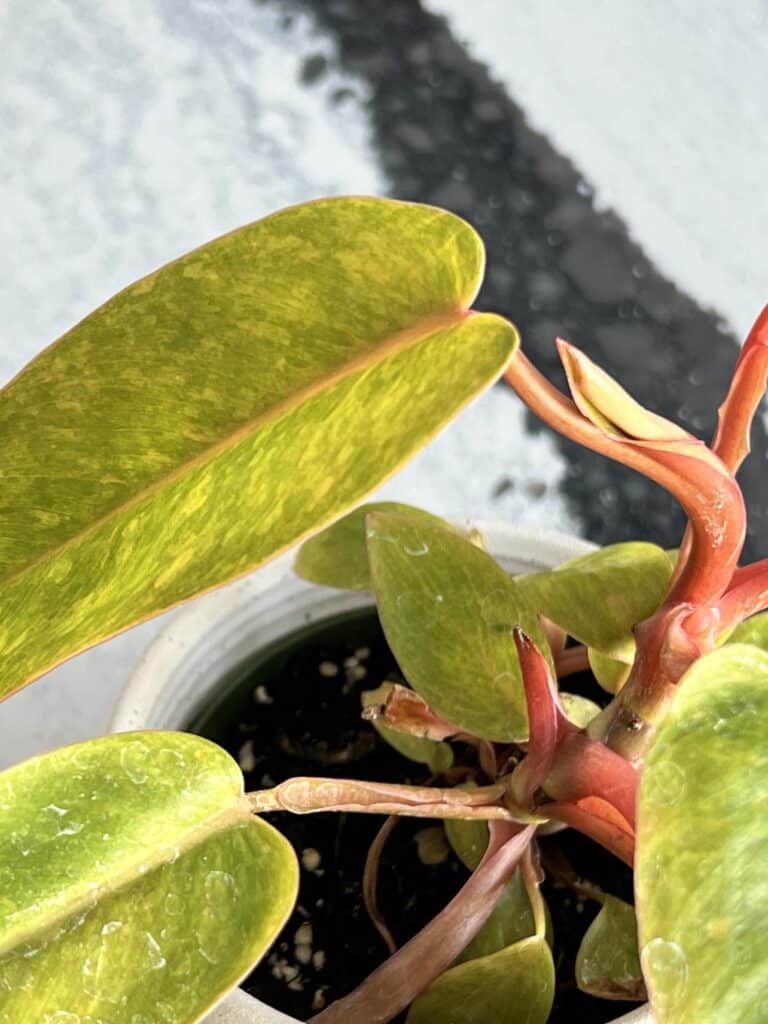
Tropical plants make excellent houseplants…even if you don’t have a green thumb!
Whether adding to your plant collection or you just want a new plant, a Philodendron Painted Lady plant is an excellent choice for any home!
Brushstrokes of Pink: What does a Painted Lady plant look like?
The Painted Lady (philodendron erubescens) is a captivating and ornamental houseplant known for its stunning foliage and pink stems.
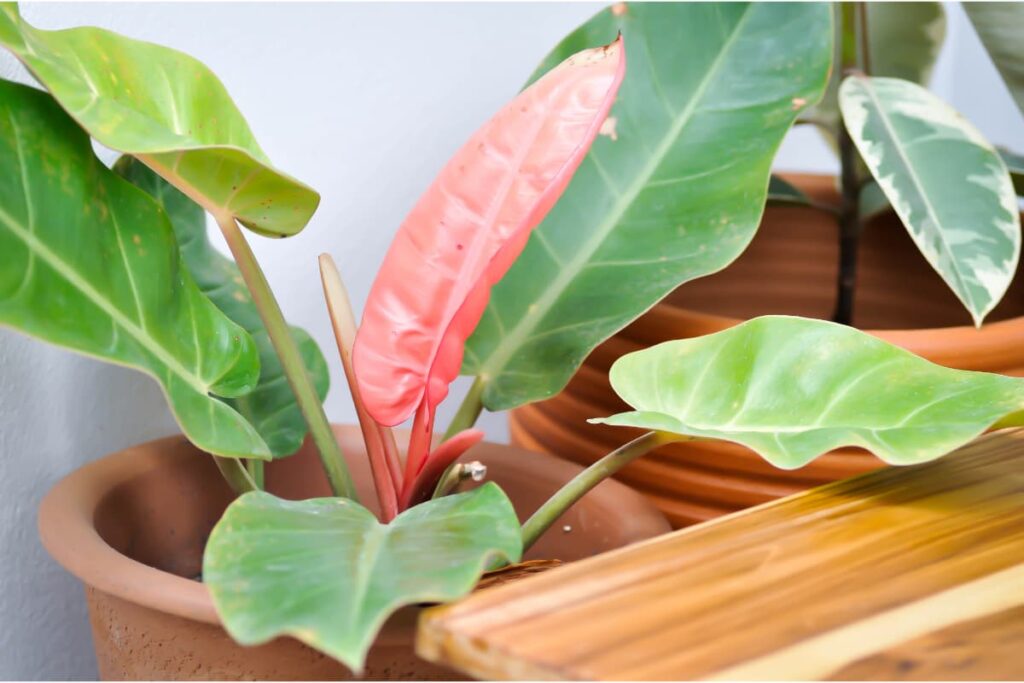
The heart-shaped leaves are a mesmerizing blend of bright yellow-green and the bright pink petioles (or stems) give the plant a beautiful and unique color palette. This striking coloration is a hallmark of the Painted Lady, making it a unique and eye-catching addition to any indoor space.
The plant has a trailing or climbing growth habit, and its leaves may develop charming splits as it matures. With a relatively easygoing nature, the Philodendron Painted Lady is an excellent choice for both beginners and seasoned plant lovers alike, adding a touch of elegance and botanical charm to your home.
Are painted lady plants rare?
Philodendron Painted Lady plants are not considered rare, but they are certainly unique and coveted among plant lovers…like me!
Their distinctive, eye-catching foliage featuring vibrant shades of green and pink makes them a popular choice for indoor gardens.
While they may not be as common as some other houseplants, Painted Lady plants are still accessible through various nurseries and online sellers. Their popularity continues to grow, and caring for these beauties adds a pretty charm to any space.
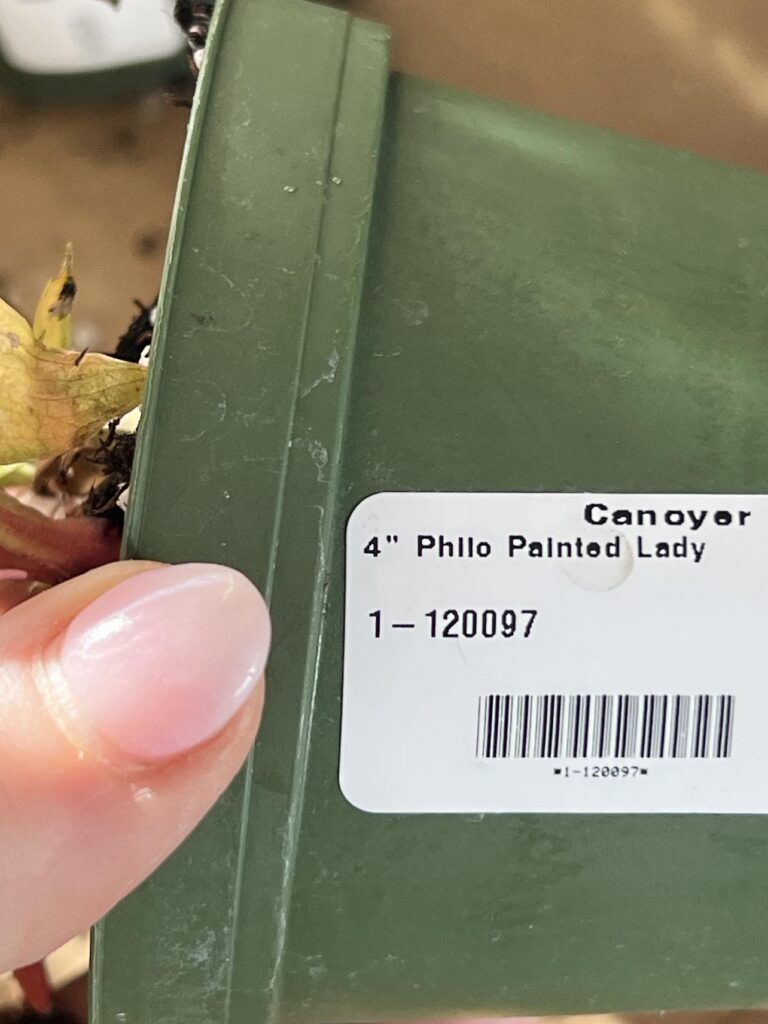
Mastering the Art of Painted Lady Plant Care
There are lots of things to consider when growing indoor plants. But, ultimately it comes down to three basic things: Water, Light, and Nutrients. Let’s break it all down for your painted lady care.
Water Requirements for a Painted Lady
The first question when tending plants is usually about watering. Painted Lady plants appreciate a careful balance when it comes to watering.
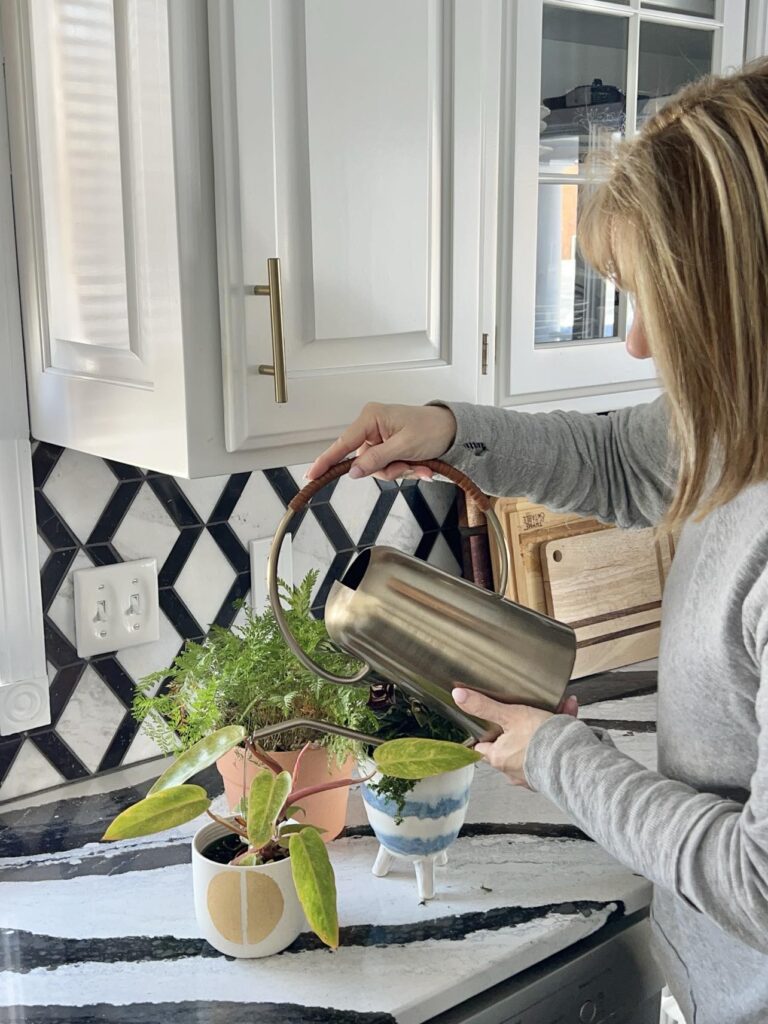
I have found that my Painted Lady likes the top inch of the soil to dry out before I give it a really good drink of water. Ideally, after checking to see if the first inch of soil is dry, (I just poke my finger into the soil!) I give it a drink and then let it sit for a few minutes before I go back and give it a good drench.
This allows the roots to open up and really soak up the water. Of course, make sure that your pot has good drainage holes.
So, get hands-on with your plant care. Stick your finger into the soil; if it feels dry an inch deep, it’s time to water. Adjust the frequency based on your home’s humidity levels and the season.
Opt for room temperature water to avoid shocking your Painted Lady. Rainwater or filtered water is an excellent choice to prevent mineral build-up in the soil.
While I do often water from the top with a watering can, I also highly recommend under-watering to prevent any chance of root rot, particularly during the winter months.
Simply place your plant on a shallow plate filled with a little water and let it slowly soak up the water from the bottom. Remove the plant after 15-20 minutes and discard any excess water. (Or, underwater another plant!) You want your plant to soak up water but not end up with soggy soil.
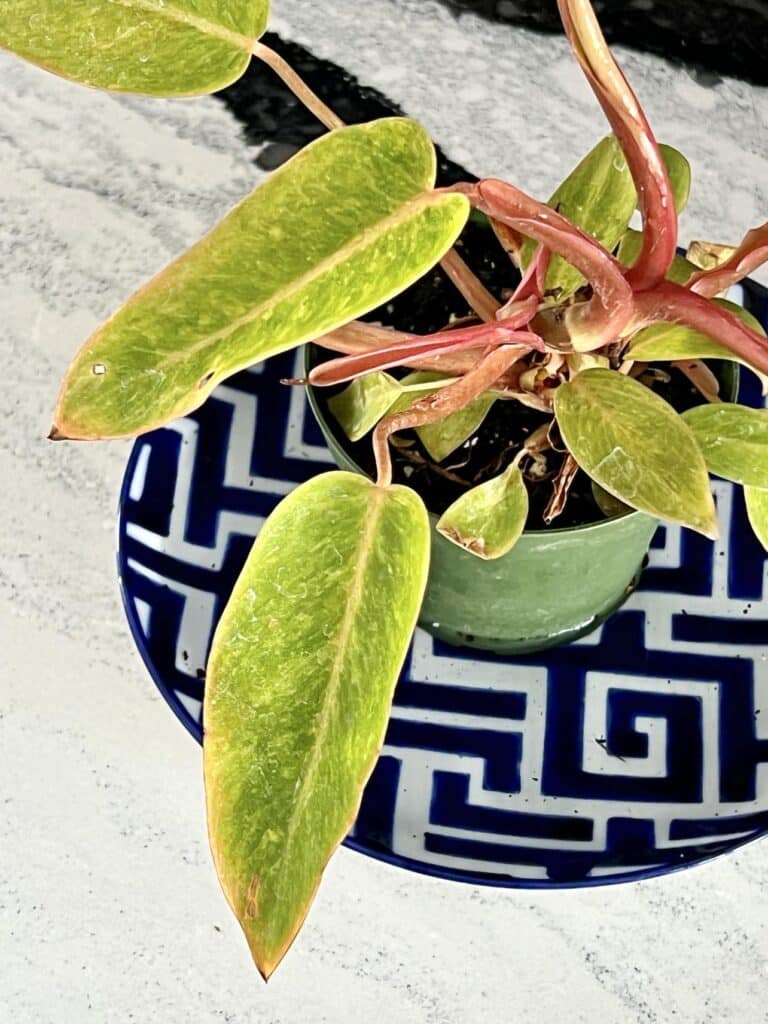
I also love to give my plants a little spritz with a plant mister each week, particularly during dry winter months.
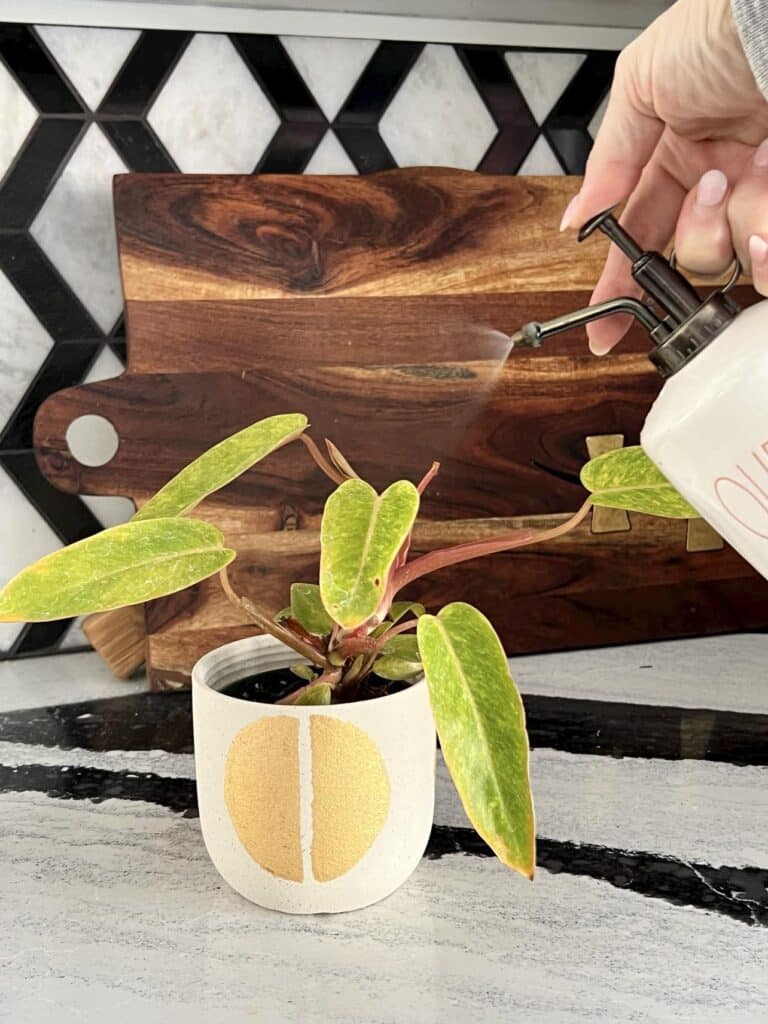
Painted Lady Light Requirements
Light is probably the care factor that I struggle with the most. Like Goldilocks and the Three Bears, it can be a juggling act between not enough or too much sunlight. But once you find “just right”, your plants will thrive!
How much light does a painted lady need?
The Philodendron Painted Lady is a relatively low-maintenance plant when it comes to lighting requirements. These charming beauties thrive in bright, indirect light, making them ideal for spaces with filtered sunlight or a few feet away from a well-lit window.
While they can tolerate lower light conditions, providing them with a bit more brightness encourages those stunning pink and green hues to truly shine.
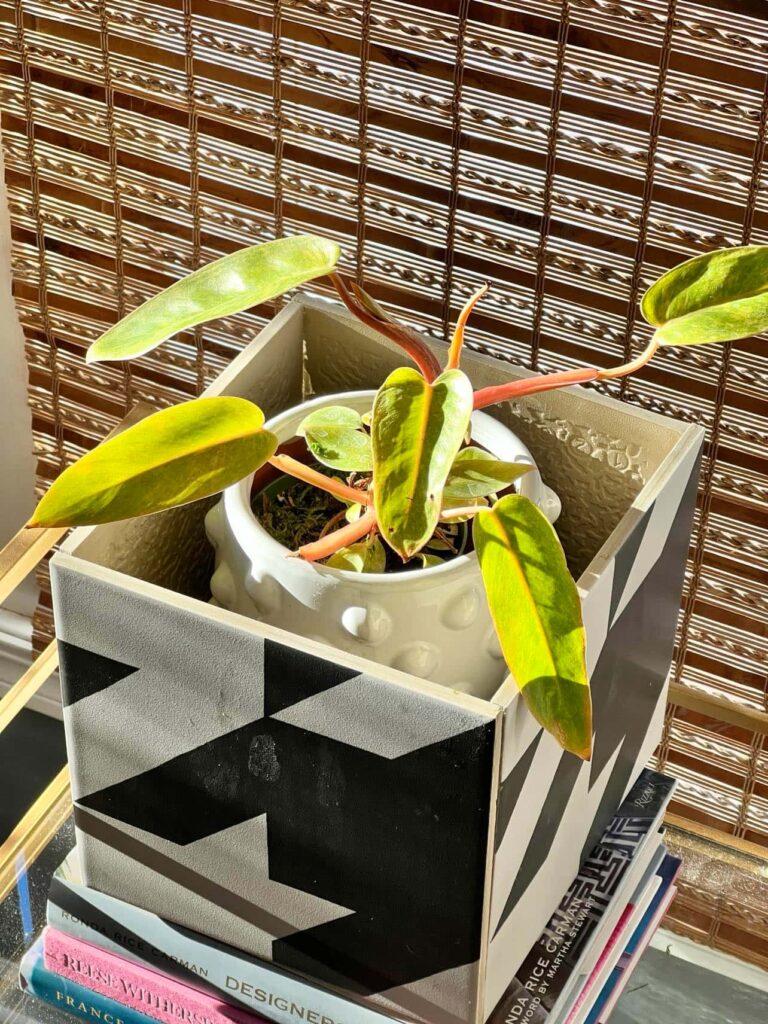
Just be mindful of direct sunlight, as it can scorch their delicate leaves. Our kitchen has the perfect bright window for my Painted Lady but I will move her in the hottest summer months.
I found that this sweet spot of bright, indirect sunlight will keep my Painted Lady happy and flourishing in this DIY tile planter box.
These adaptable plants can tolerate lower light conditions but may affect their growth rate. Adjust their placement based on your home’s natural light, and watch their foliage flourish.
What is the best window for a painted lady?
Your Philodendron Painted Lady will feel right at home in a spot with bright, indirect light. An east or north-facing window are great options for an optimal light source. These orientations provide the perfect balance of sunlight without the intensity that could harm those lovely leaves.
If you’ve got a west or south-facing window, no worries—just make sure your Painted Lady is a bit further away from the direct rays or use sheer curtains to filter the light.
The goal is to create a cozy nook where your plant can bask in the gentle glow and show off its stunning hues. So, find that perfect window seat, and let the foliage fashion show begin!
Feeding Your Painted Lady Plant
Feeding means fertilizing and ensuring that your plant has the right nutrients for healthy growth. But before you start to think about feeding your plant, make sure your plant is living its best life in a properly sized pot with good soil.
The Best Soil for a Painted Lady Plant
Let’s be honest…it is so tempting to just throw some garden soil in a pot. For your plant’s sake, resist this urge!
Choosing the right soil for your Philodendron Painted Lady is a crucial step in ensuring its health and vibrancy.
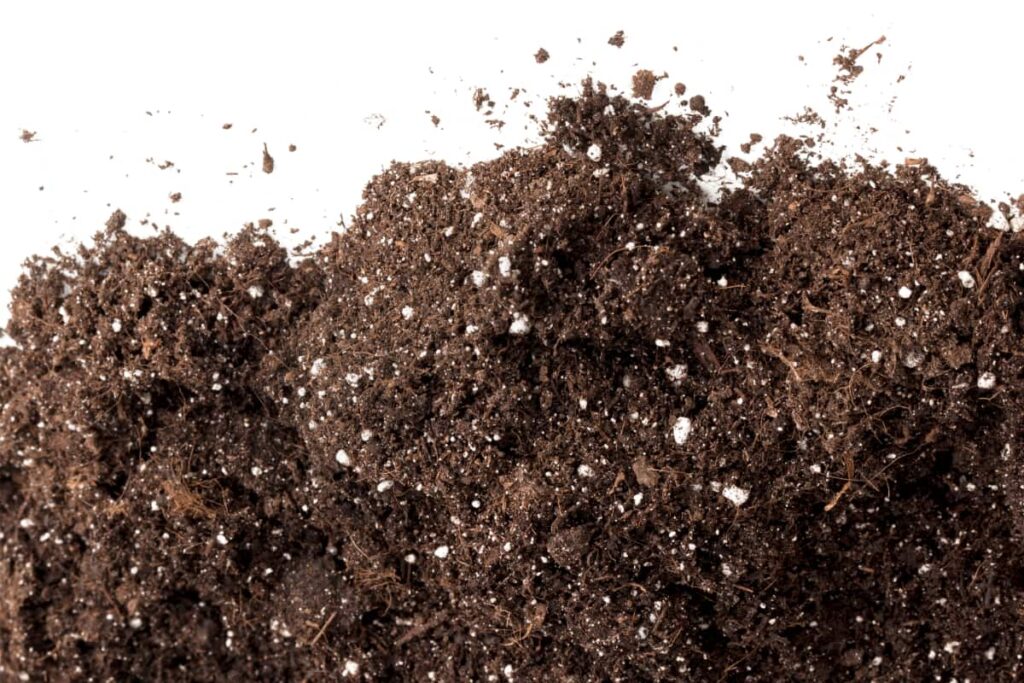
Opt for a well-draining potting mix with plenty of organic matter that allows excess water to escape easily, preventing the risk of root rot. A blend of peat moss, perlite, and pine bark creates an airy and lightweight medium, striking the perfect balance between water retention and drainage.
This combination not only provides essential nutrients but also mimics the plant’s native tropical environment, promoting optimal growth. Aim for a slightly acidic to neutral pH range (6.0-7.0) to support nutrient absorption.
Choosing the Right Pot for a Painted Lady
Selecting the right pot is like choosing the perfect frame for a work of art when it comes to your Philodendron Painted Lady.
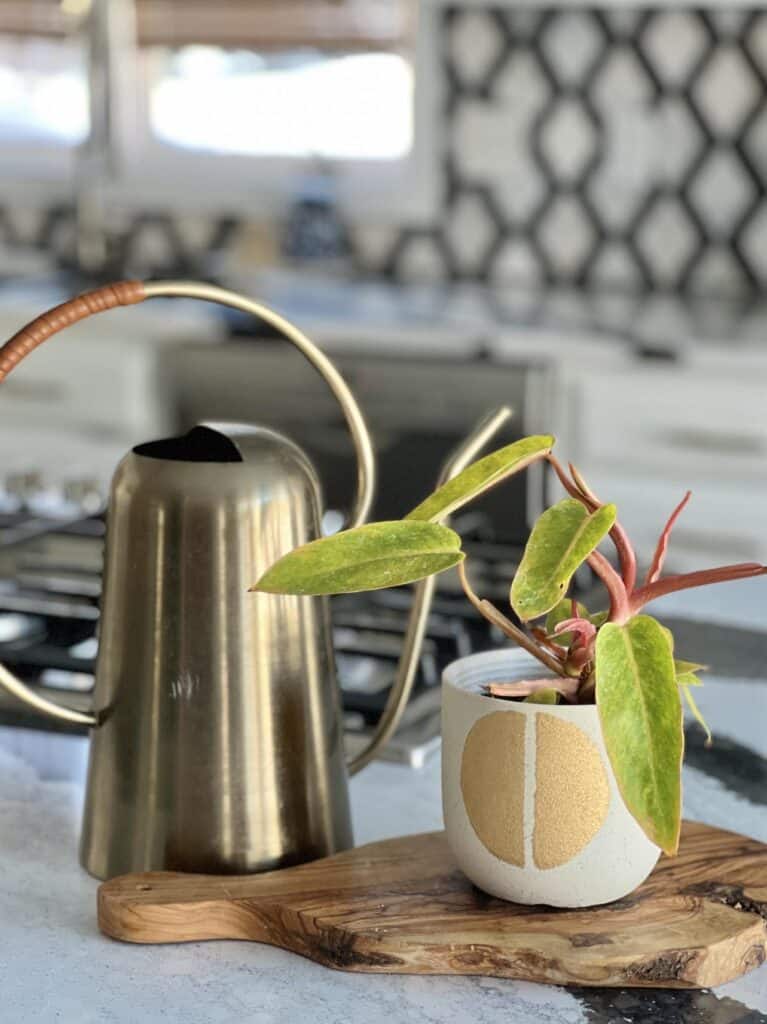
When considering the pot size, choose a pot that offers ample drainage holes to prevent waterlogging, ensuring the roots stay healthy and happy. A container that’s approximately 2 inches larger in diameter than the current root ball provides a snug yet comfortable space for your Painted Lady to spread its roots.
This not only encourages sturdy growth but also minimizes the risk of overwatering. When repotting, usually every 1-2 years, springtime is the opportune moment to refresh the soil and give your Painted Lady a bit more room to flourish.
Fertilizing a Painted Lady Plant
Imagine the growing season as the prime time for your Philodendron Painted Lady to thrive. During this period in spring and summer, it appreciates a nutrient boost through a balanced liquid fertilizer every 4-6 weeks. However, here’s the key: go for a diluted solution, about half or even quarter strength.
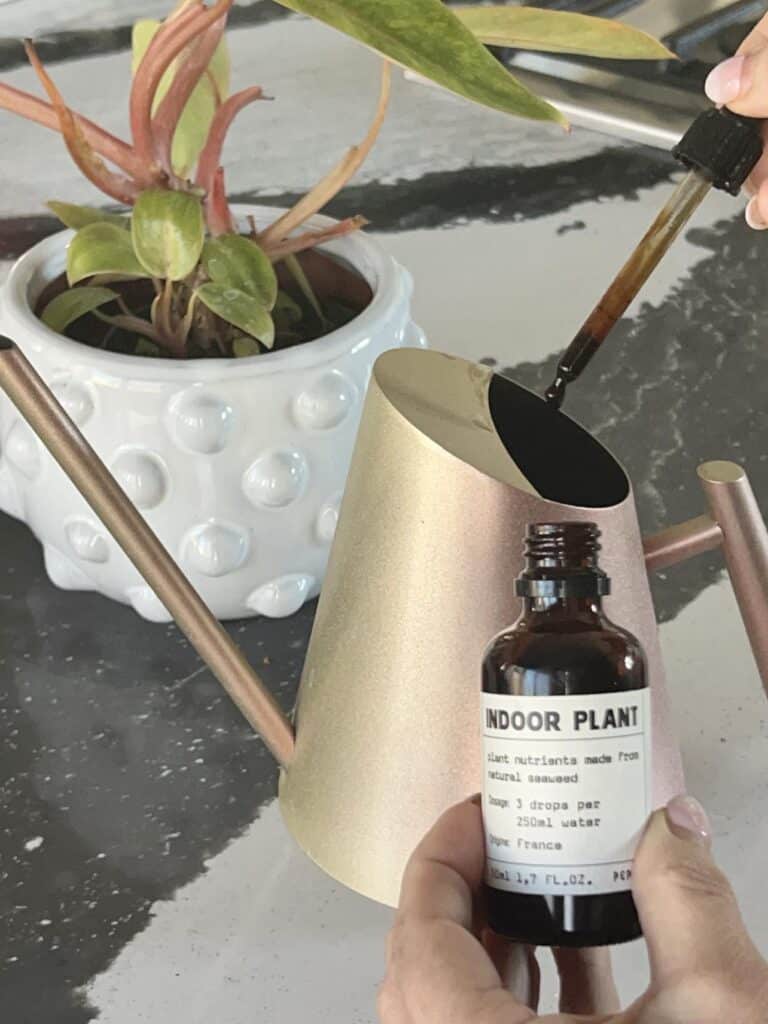
This cautious approach prevents overfeeding. You don’t overwhelm your plant with too much of a good thing. By treating your Painted Lady with this thoughtful care, you’re setting the stage for a vibrant and flourishing foliage display.
When temps drop in fall and winter, your Philodendron Painted Lady gracefully takes a pause, entering a cozy period of dormancy. Picture it as your plant enjoying a well-deserved winter slumber, tucked in and conserving energy.
During this downtime, it appreciates a lighter touch when it comes to feeding. Scale back on fertilizing this time when the Painted Lady enters a period of dormancy. Resume regular feeding as the growing season resumes.
Pruning Your Painted Lady
I sometimes have a hard time with pruning because I love a plant with a lush look. However, just as my own head of hair needs a periodic trim, so does the Painted Lady!
Correct pruning will encourage new growth, encourage leaf varigation, and just helps the plant to look more tidy and groomed.
Use sharp pruning scissors to cut away dead foliage and errant stems with no leaves.
Before you know it, your painted lady will be sprouting new growth!
Propagation Tips
Let’s talk propogation for your Philodendron Painted Lady – the secret to growing your plant family. There are three different ways that you can propagate your plant….all very easy techniques!
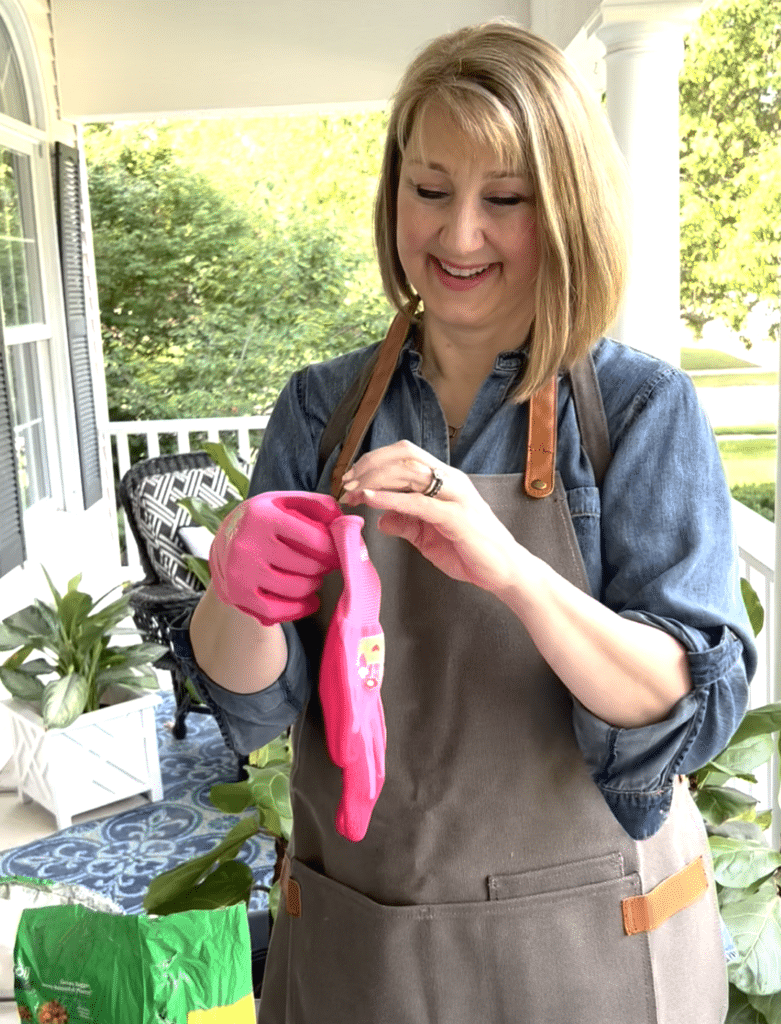
Stem Cutting Propagation
When taking a cutting, make sure it has at least one node – that’s the green light for new leaves.
Now, for a bit of TLC, dip the cut end in candle wax or beeswax. This creates a protective coat to ward off bugs and keep things clean. Pop the cutting into soil that’s moist but not overly soggy.
Here’s a little bonus: sprinkle a layer of peat moss on top – it’s like giving your new plant a cozy bed to encourage those roots to grow.
Spaghnum Moss Propagation
Sphagnum moss is a great tool for plant recovery and propagation. If your plant has faced root rot, sphagnum moss can help kickstart its growth. Additionally, it’s handy for getting cuttings to root before planting them in the soil.
Simply wrap the nodes of the cutting with damp moss, place it in a lidded plastic container to trap moisture, and check for roots after 2-3 weeks. It’s a straightforward method to revive plants or encourage new ones to take root.
Water Propagation
This is probably my favorite method for propagation of any type of plant because it is so easy!
For water propagation, take a cutting and place it in a clear container filled with water. Keep an eye on the water quality, replacing it when it gets cloudy or murky. Submerge the nodes in water while ensuring the leaves stay above the surface.
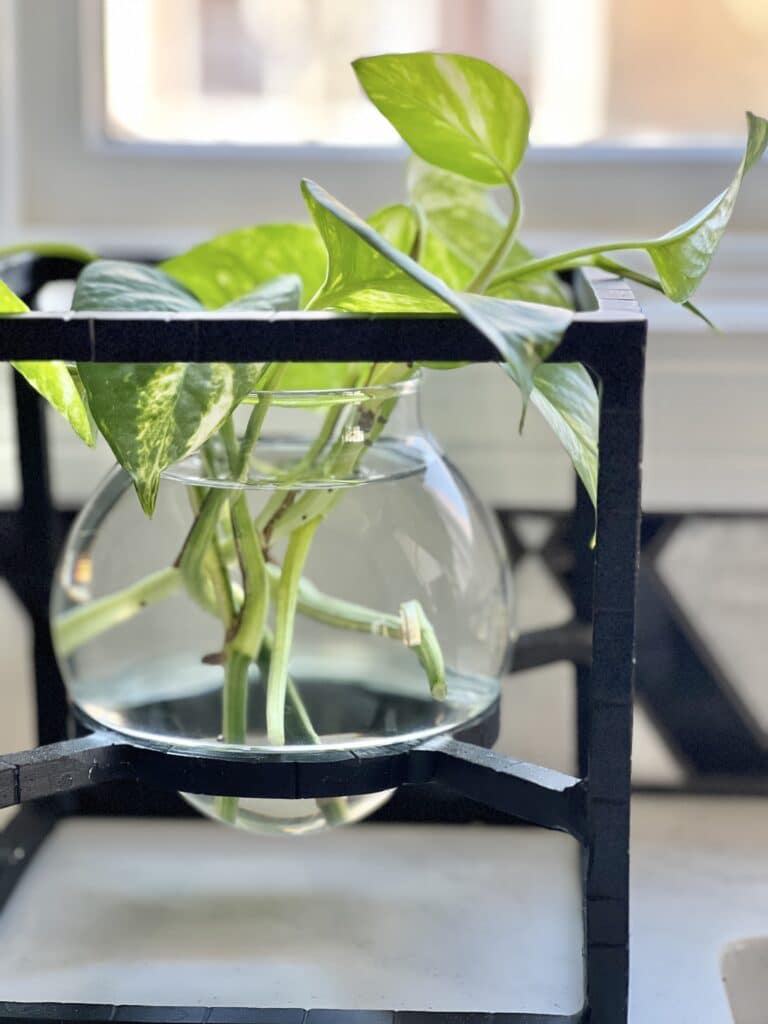
You’ll notice roots appearing in about a week. I love watching roots grow and sometimes leave plants in the water jar just for the root effect!
Once the roots reach a length you’re satisfied with, go ahead and plant your cutting in soil.
This is a really simple process to start roots in water before transitioning to soil.
Problem-Solving Painted Lady Plant Problems
1. Yellowing Leaves: Yellow leaves can indicate overwatering or too much direct sunlight. Adjust your watering routine and consider moving the plant to a slightly shadier spot.
2. Root Rot Alert: If you notice mushy, brown roots, your plant may be experiencing root rot due to waterlogged soil. Trim away affected roots, repot in fresh soil, and adjust your watering habits.
3. Pest Patrol: Keep an eye out for pests like spider mites and scale. Wipe leaves with a gentle soap solution or neem oil to deter unwanted visitors.
4. Leggy Growth: If your Painted Lady becomes leggy with sparse foliage, it might need more light. Move it to a brighter location to encourage compact and lush growth.
FAQ
Is the philodendron Painted Lady a climber?
The Painted Lady has a touch of the adventurer and is actually a type of climbing philodendron. While not a vigorous climber like some of its Philodendron relatives, this plant does appreciate a little support. You might notice it sending out aerial roots as it explores its surroundings.
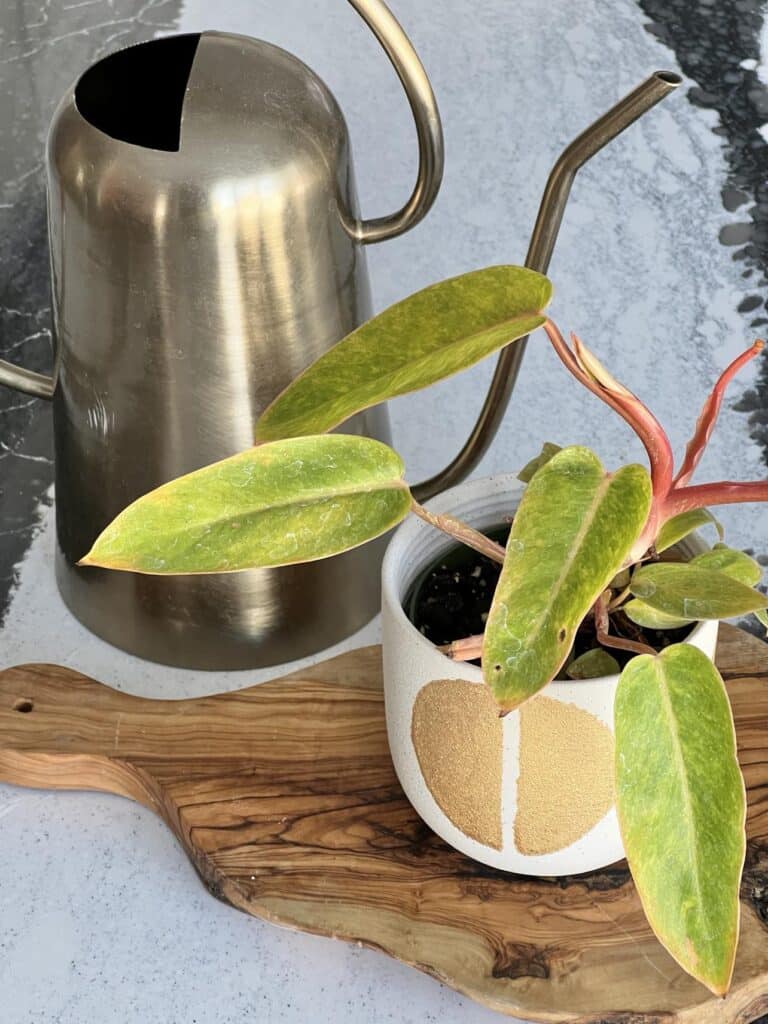
Give it a stake or a moss pole to cling onto, and you’ll be rewarded with a gracefully climbing or trailing display. It’s like giving your Painted Lady its own little jungle gym to play on—just another reason to love this charming and adaptable houseplant!
What is the lifespan of a Painted Lady?
With proper care and a sprinkle of plant love, these beauties can thrive for many years, bringing joy to your indoor garden.
While individual lifespans can vary based on factors like care routines and environmental conditions, it’s not uncommon for a Philodendron Painted Lady to be a cherished part of your plant family for a decade or even longer!
Why is my Philodendron painted lady turning yellow?
Yellow leaves can signal a few things, but it’s usually a sign that your plant might be getting a bit too much water or not enough light.
Tip: Check the soil—make sure it’s not waterlogged and that your pot has good drainage. Adjusting your watering routine and finding that sweet spot of bright, indirect light should perk up your Painted Lady in no time.
Is the Painted Lady Philodendron Toxic to Animals?
Yes, the Philodendron Painted Lady plant is toxic to animals, including cats and dogs. Like many other plants in the Philodendron genus, it contains calcium oxalate crystals, which can cause irritation and discomfort if ingested.
Symptoms may include drooling, difficulty swallowing, and vomiting. It’s essential to keep the Painted Lady plant out of reach of pets and, if ingestion is suspected, seek immediate veterinary attention.
I keep my Painted Lady high on a shelf so our dog Bentley can’t get to it!

If you have pets, it’s always a good idea to choose non-toxic houseplants to ensure the safety of your furry friends. You can check this list from the ASPCA for toxic and non-toxic plant lists.
How to Style a Painted Lady Plant
Styling a Painted Lady plant is so much fun because of its beautiful color shading and its versatility.
Playing with different pots, considering decor accents, and choosing the perfect backdrop allow for creative decorating that evolves with the plant’s growth.
Natural Elegance: Styling in a Wood Bowl or Planter
Enhance your indoor space by placing your Philodendron Painted Lady in a simple wood bowl or planter. Nestle it into the bowl with beautiful green moss or sphagnum moss tucked into empty spaces.
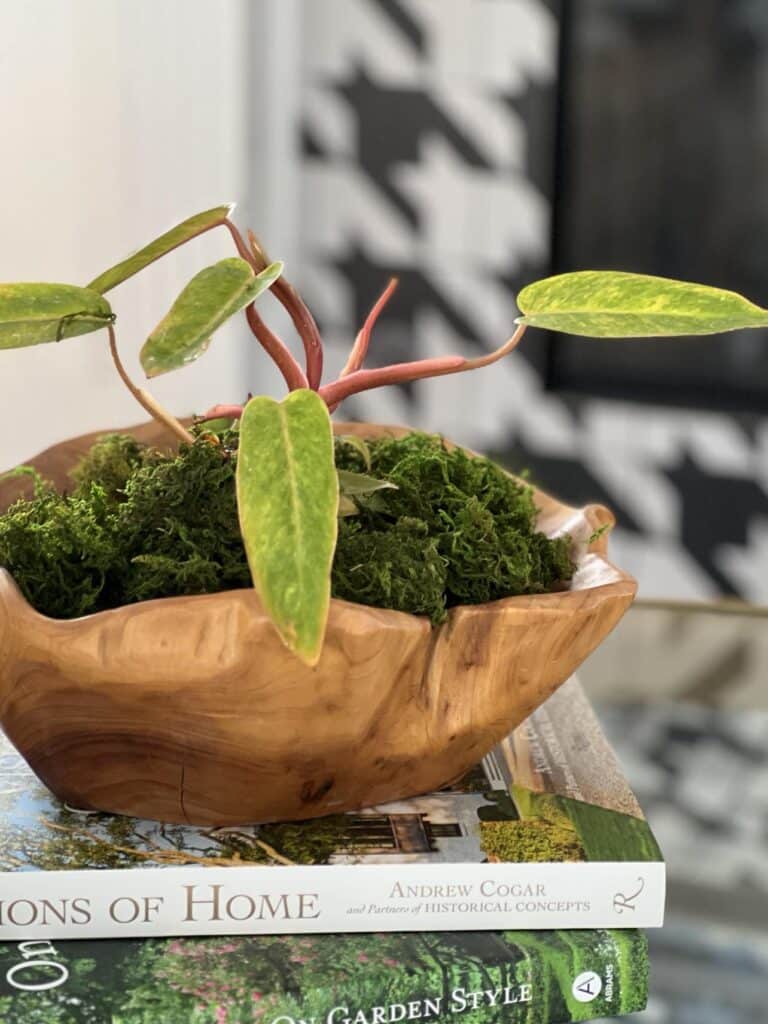
The earthy tones of the wood complement the plant’s vibrant green and pink colors, creating a stylish and natural look. The wood bowl adds a rustic touch, while the moss provides a clean base for your plant.
It’s an easy way to bring a bit of the outdoors inside and create a visually appealing arrangement.
Clean Palette: Styling the Painted Lady Plant in White
Opting for a clean and classic white pot for your Philodendron Painted Lady is like giving your plant the perfect stage to showcase its leafy performance. The pristine white serves as a brilliant backdrop, allowing the vibrant hues of the leaves to take center stage.
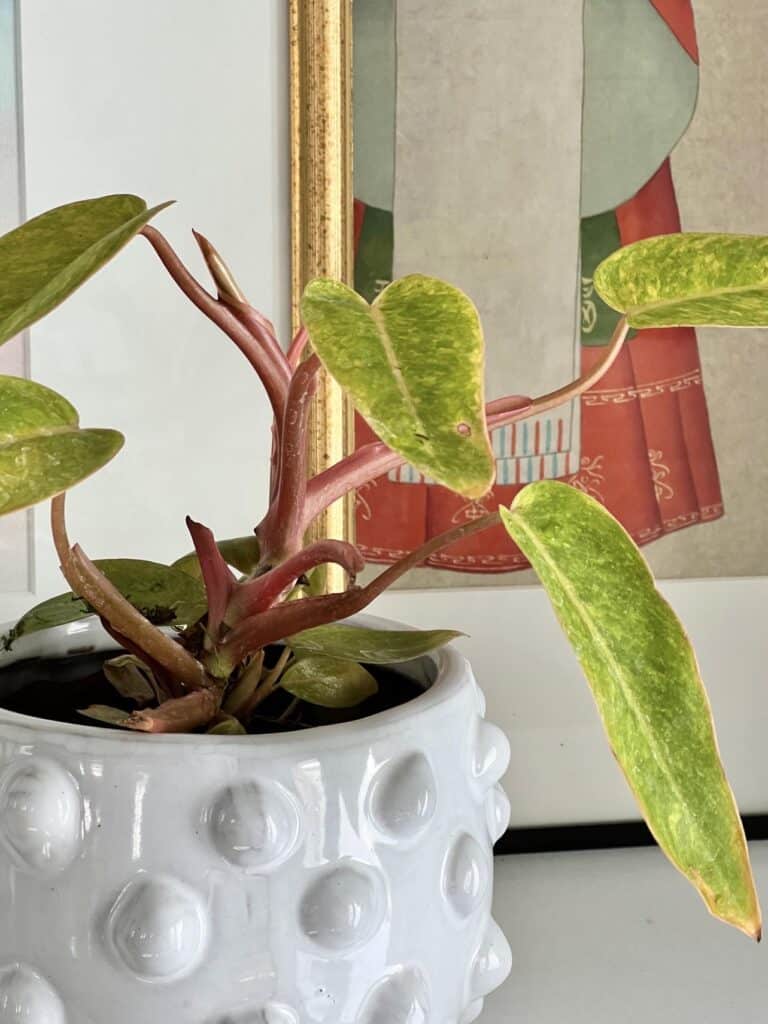
The meandering leaves, with their captivating blend of greens and pinks, stand out against the crisp white, creating a visually striking display.
Moreover, the clustered lower leaves, like a little green bouquet, become a focal point against the immaculate backdrop. It’s a design choice that not only exudes timeless elegance but also enhances the overall visual impact of your Painted Lady, turning it into a showstopper in its own right.
Think Pink!
Embrace the natural coloration of your Philodendron Painted Lady and style it with chic pink home decor pieces. Given the pink color of the stems, pairing the plant with pink decor makes perfect sense!
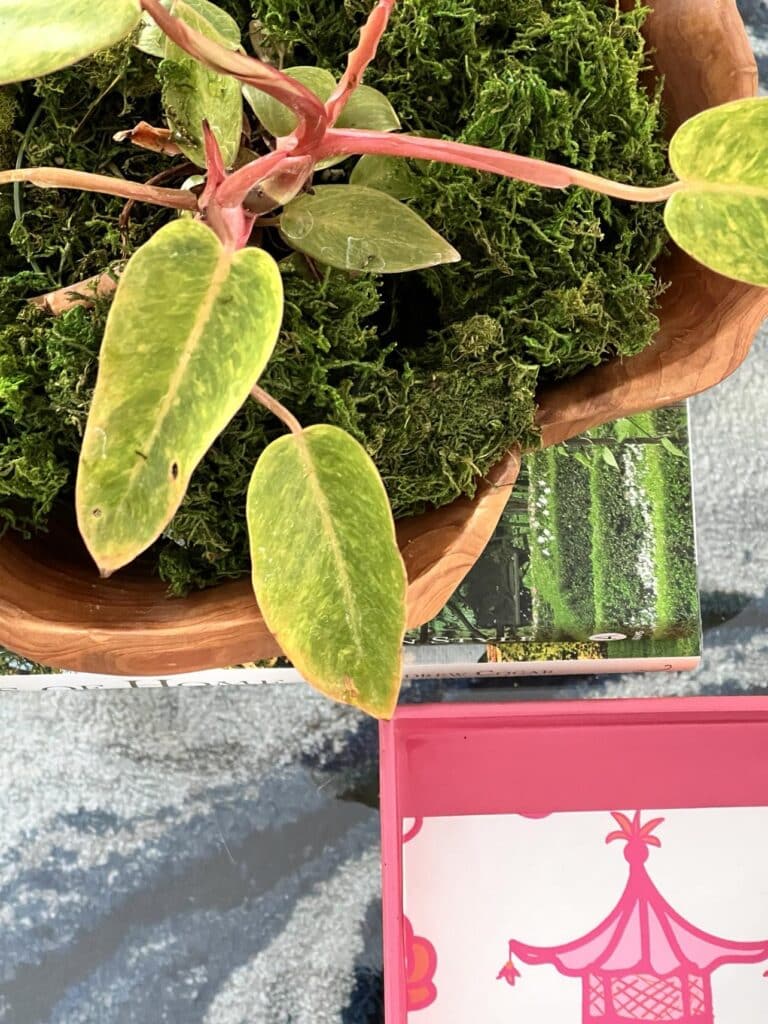
This pink tray serves as a perfect accessory pairing with the plant. It enhances the vibrancy of your Painted Lady and turns the space into a botanical haven with a trendy twist.
From Roots to Decor: Unleash the Beauty of Your Painted Lady
In the colorful journey of exploring Philodendron Painted Lady care and styling, we’ve uncovered the art of nurturing and showcasing this great plant.
From water and light considerations to pot choices and propagation tips, we’ve explored the essentials for cultivating a thriving and visually stunning plant companion.
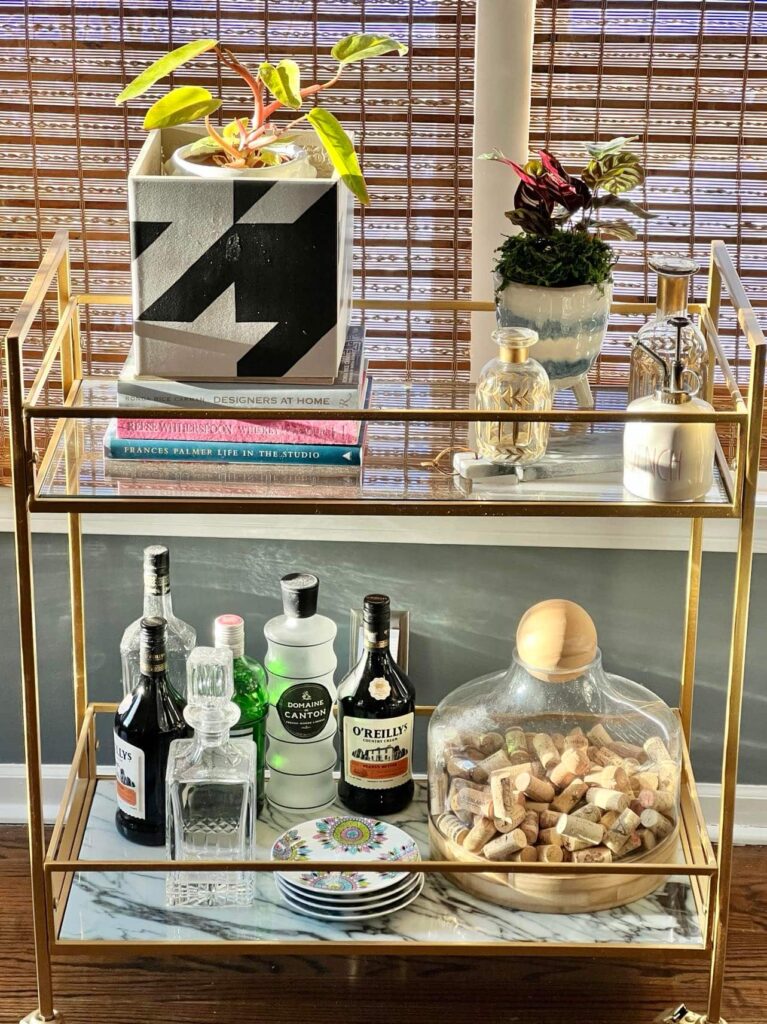
Whether you’ve adorned it with pink decor accents, placed it in a white pot for a minimalist touch, or curated a wood and moss centerpiece, your Painted Lady is now a living masterpiece!
May your indoor oasis continue to bloom with the vibrant hues of the Painted Lady, transforming your space into a haven of botanical delight.
Cheers!

Don’t Forget to Pin It!
Pin the image below to your boards on Pinterest (just click the Pin button in the top left corner). You can also follow along with me on Pinterest!
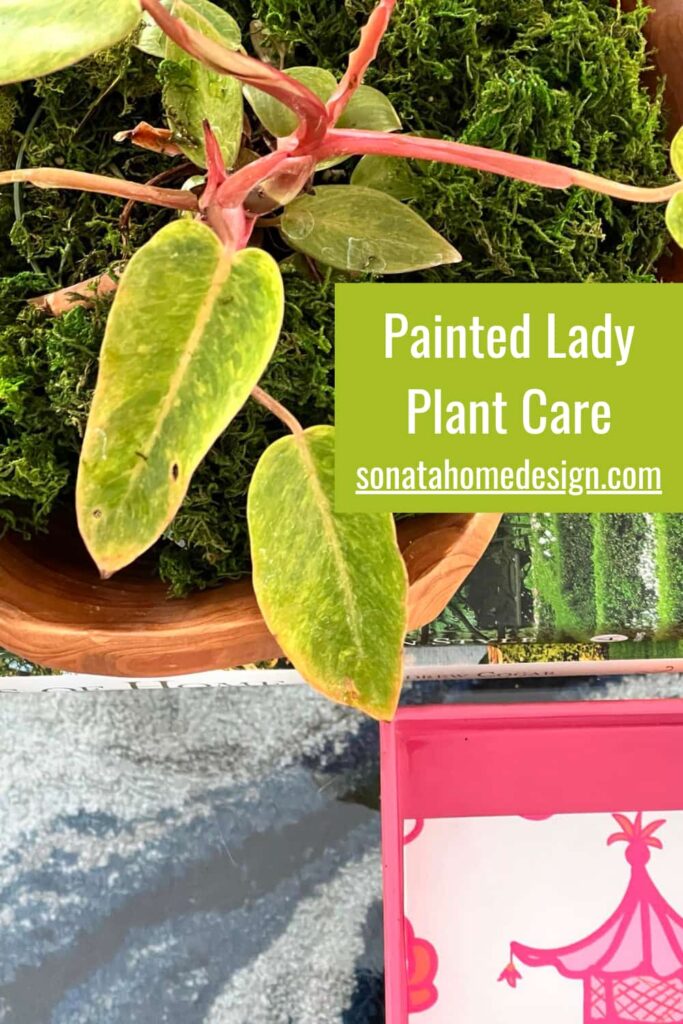
More For Your Green Thumb
How to Easily Transplant Plants Without Killing Them


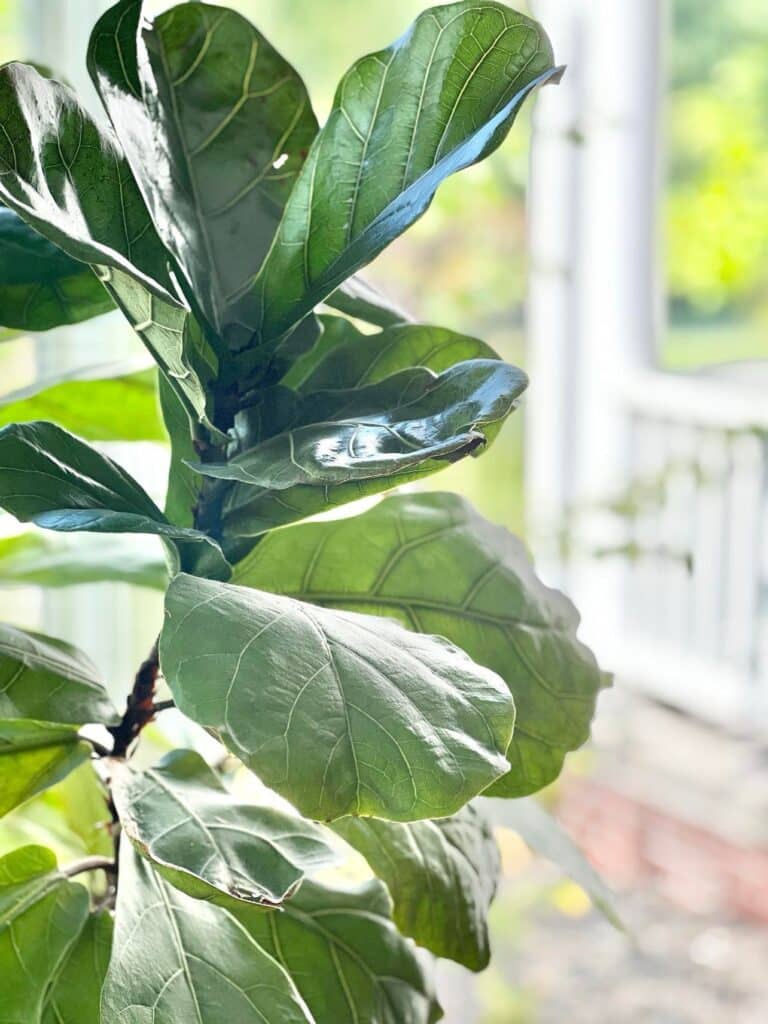
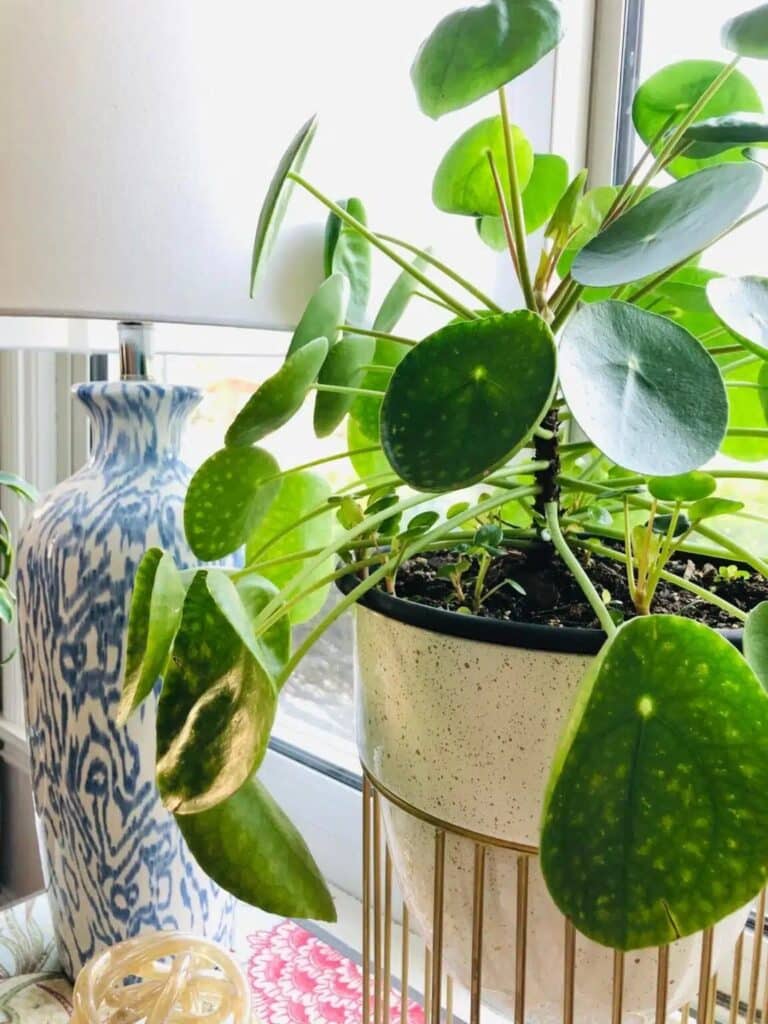

“Unlock the secrets to flourishing gardens with ‘Painted Lady Plant Care: A Complete How-To Guide,’ a comprehensive resource that not only nurtures the beauty of Painted Lady plants but also empowers readers to cultivate thriving green spaces, transforming any garden into a botanical haven.”
Thank you for the information, it is very useful for our family.
I’m so glad you found it helpful, Linda! Do you have a painted lady plant or are you wanting to get one?
Great job on the post! Keep up the good work!.Such a nice blog and info.
Thank you so much!